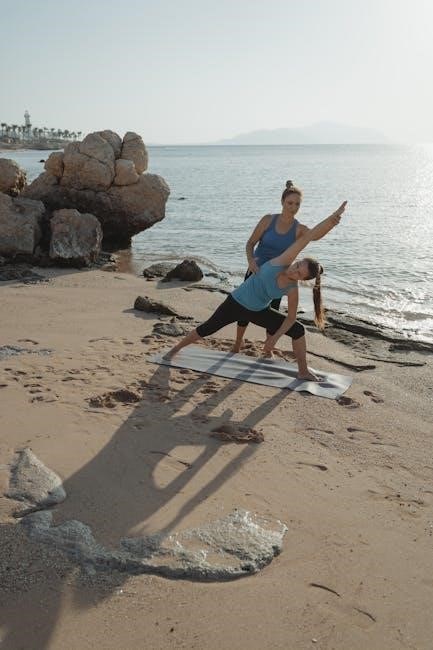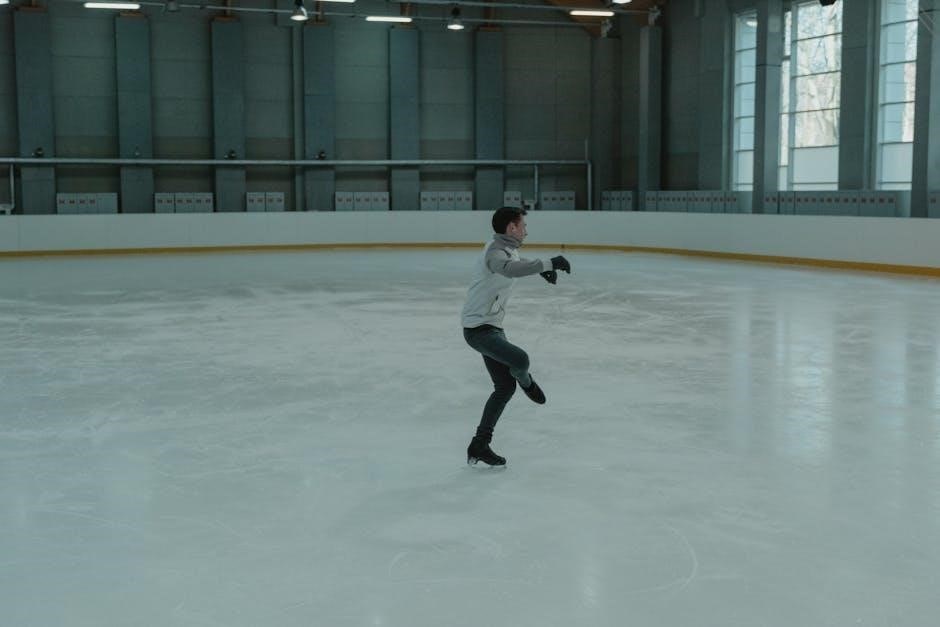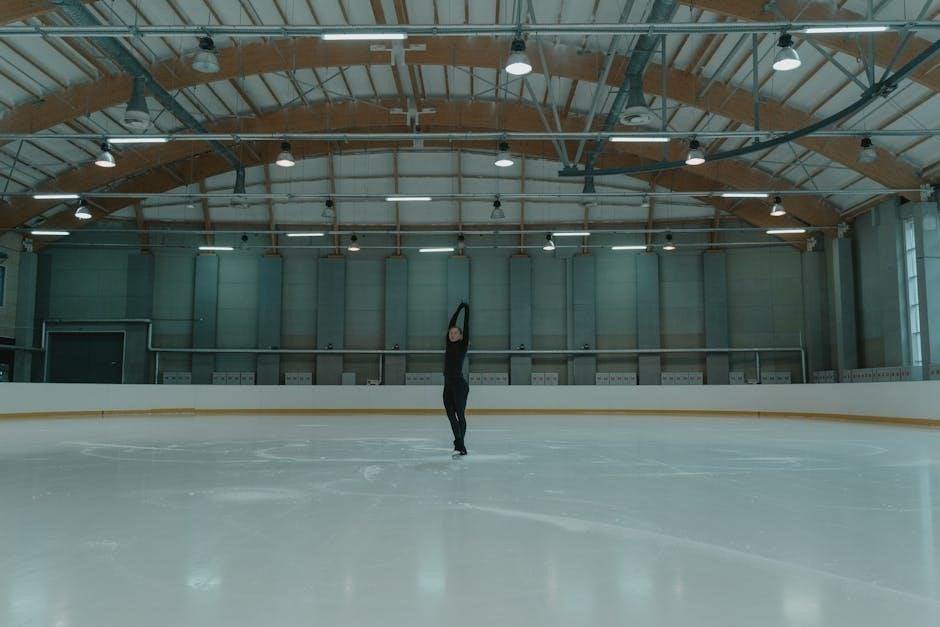Dupuytren’s contracture is a progressive hand condition causing fingers to curl into the palm due to thickened tissue. It often affects the pinky and ring fingers, reducing hand functionality and dexterity. While exercises cannot cure the condition, they can help manage symptoms and improve flexibility, especially when combined with treatments like physical therapy or surgery. Early intervention and consistent practice are key to maintaining hand function and delaying progression. Regular stretching and strengthening exercises, as outlined in downloadable PDF guides, are essential for managing this condition effectively.
1.1 Definition and Overview
Dupuytren’s contracture is a slow, progressive hand condition characterized by thickening and stiffening of the palmar fascia, leading to claw-like curvature of the fingers. It typically affects the ring and pinky fingers, causing them to curl into the palm. This condition is more common in men over 40 and can significantly impair hand function and dexterity. While exercises cannot cure Dupuytren’s, they play a crucial role in managing symptoms, improving flexibility, and maintaining hand functionality, especially when combined with other treatments like physical therapy or surgery. Regular practice is essential to slow progression and enhance quality of life.
1.2 Causes and Risk Factors
Dupuytren’s contracture is caused by thickening and stiffening of the palmar fascia, a connective tissue under the skin of the palm. The exact cause is unknown, but risk factors include age (most common after 50), gender (more prevalent in men), and genetics. Other factors like smoking, alcohol consumption, and conditions such as diabetes or epilepsy may increase susceptibility. Family history also plays a significant role, with a higher likelihood in individuals of Northern European descent. Understanding these factors aids in early detection and management.
1.3 Symptoms and Progression
Dupuytren’s contracture often begins with lumps or thickened tissue under the skin of the palm. Over time, this can develop into cords, causing fingers to curl into the palm. The ring and pinky fingers are most commonly affected. Progression is usually slow, but can lead to significant deformity and loss of hand function. Early symptoms may include numbness or tenderness, while advanced stages can severely limit daily activities and dexterity.
The Role of Exercises in Managing Dupuytren’s Contracture
Exercises play a crucial role in managing Dupuytren’s contracture, improving finger flexibility, and aiding recovery post-surgery. PDF guides provide structured routines to enhance hand function effectively.
2.1 Can Exercises Cure Dupuytren’s Contracture?
Exercises cannot cure Dupuytren’s contracture, as they do not halt the progression of the condition. However, they can help manage symptoms by improving finger flexibility and reducing stiffness. Regular stretching and strengthening exercises, as detailed in PDF guides, are particularly beneficial for maintaining hand function and delaying further deformation. While exercises are not a standalone solution, they complement treatments like physical therapy or surgery, aiding in recovery and enhancing overall hand mobility. Consistency is key to maximizing their benefits.
2.2 Benefits of Exercises for Dupuytren’s Contracture
Exercises for Dupuytren’s contracture offer numerous benefits, including improved finger flexibility, reduced stiffness, and enhanced hand function. They help maintain mobility, delaying the progression of the condition. Post-surgery, exercises are essential for restoring movement and preventing further deformity. Regular practice also strengthens hand muscles, improving grip and dexterity. By following structured routines, individuals can better manage symptoms and maintain independence in daily activities, even as the condition progresses. Consistent exercise is vital for optimizing hand health and functionality.
2.3 When to Start Exercises
Exercises for Dupuytren’s contracture are most beneficial when started early, even in mild cases, to maintain mobility and prevent stiffness. Post-surgery, exercises should begin within a few days to promote recovery and restore function. Consulting a healthcare provider or therapist is crucial to determine the right time and approach. Early intervention helps preserve hand function, while delayed exercise may reduce its effectiveness. A tailored plan ensures exercises are safe and effective, avoiding overexertion that could worsen symptoms.

Types of Exercises for Dupuytren’s Contracture
Exercises include gentle stretching, tendon gliding, grip strengthening, and finger flexibility routines. These help maintain mobility, reduce stiffness, and improve hand function, tailored to individual needs and stages.
3.1 Gentle Stretching Exercises
Gentle stretching exercises are designed to improve finger extension and reduce contracture severity. Place your hand flat on a table and gently lift each finger one at a time, holding for 10-15 seconds. Avoid force, as this can worsen the condition. Repeat 10 times per session, ideally multiple times daily. These exercises help maintain flexibility and prevent further curling of the fingers. Regular practice is crucial for optimal results and should be done as instructed by a healthcare provider.
3.2 Tendon Gliding Exercises
Tendon gliding exercises improve finger mobility by ensuring tendons move smoothly. Start with fingers straight, then bend knuckles, next form a hook fist, and finally, curl fingers into the palm. Each position should be held briefly to promote tendon flexibility. These exercises prevent tendons from adhering to tightened tissue and enhance hand dexterity. Regular practice, as detailed in PDF guides, is essential for maintaining tendon health and reducing contracture progression.
3.3 Grip Strengthening Exercises
Grip strengthening exercises help maintain hand function by improving finger and thumb strength. Activities like squeezing a stress ball or using therapy putty can enhance grip power. Place a small object, such as a towel or paper, in your palm and practice squeezing gently. These exercises promote dexterity and reduce stiffness, aiding in daily activities. Regular practice, as outlined in PDF guides, supports overall hand health and slows progression of the condition, keeping fingers more flexible and functional.
3.4 Finger Flexibility and Dexterity Exercises
Finger flexibility and dexterity exercises focus on improving mobility and coordination in the fingers. Start by placing your hand flat on a table and spreading your fingers as far apart as possible, then bringing them together. Practice picking up small objects to enhance grip and precision. Thumb exercises, such as touching each fingertip, also improve dexterity. Regular practice, as detailed in PDF guides, helps maintain finger independence and reduces stiffness, keeping hands functional and agile despite Dupuytren’s progression.

Post-Operative Exercises for Dupuytren’s Contracture
Post-operative exercises focus on restoring hand mobility and preventing stiffness after surgery. Gentle finger glides and tendon gliding exercises are often recommended to improve flexibility and range of motion. Regular practice, guided by PDF resources, helps patients regain functional use of their hands and ensures proper healing. Consistency is key to achieving optimal recovery and maintaining hand functionality.
4;1 Immediate Post-Surgery Care
After surgery, it is crucial to prioritize hand rest and protection. A splint is often worn to maintain finger alignment and promote healing. Elevating the hand above chest level can reduce swelling and pain. Pain management may require medication for about a week, with some patients experiencing numbness or tingling. Avoid using the affected hand for 2 weeks post-surgery to ensure proper recovery. Regular follow-ups with a healthcare provider are essential to monitor progress and address any concerns.
4.2 Exercises to Improve Mobility
Post-surgery, gentle exercises are introduced to restore finger movement and hand function. Finger gliding exercises, such as bending fingers into a tabletop or hook fist position, are commonly recommended. Tendon gliding exercises help improve finger independence and mobility. Patients are encouraged to perform these exercises 10-15 times every 1-2 hours to prevent stiffness. Avoiding overexertion is crucial, as excessive strain can hinder recovery. A hand therapist can provide personalized guidance to ensure proper technique and progress.
4.3 Wearing a Splint and Its Importance
A splint is essential after Dupuytren’s surgery to maintain proper finger alignment and prevent contracture recurrence. It is typically worn for 4-6 months, with adjustments made during therapy sessions. The splint supports the hand, allowing tissues to heal in the correct position. Consistent use of the splint, especially at night, is crucial for optimal recovery. Patients should bring their splint to each therapy session for modifications and to ensure proper fit and alignment, promoting long-term functionality and reducing the risk of reoccurrence.
Practical Tips for Performing Exercises
Establish a consistent routine, monitor progress, and avoid overexertion. Gentle stretching is key to prevent injury. Regular practice helps maintain flexibility and strength, ensuring long-term benefits.
5.1 Creating a Routine
Establishing a consistent exercise routine is crucial for managing Dupuytren’s contracture. Start with short, manageable sessions (10-15 minutes) 2-3 times daily. Schedule exercises at the same time each day, such as morning and evening, to build a habit. Use a downloadable PDF guide to track progress and stay organized. Begin with gentle stretches and gradually increase intensity. Incorporate rest days to avoid overexertion. Consistency and patience are key to improving flexibility and strength over time.
5.2 Monitoring Progress
Monitoring progress is essential to track improvements and adjust your exercise routine. Use a journal or a downloadable PDF guide to record daily exercises, noting any changes in finger flexibility, strength, or pain levels. Regular check-ins with a hand therapist can provide personalized feedback. Adjustments to your routine should be based on observed progress. Celebrating small milestones, like increased finger extension, helps maintain motivation and encourages continued commitment to your exercise program.
5.3 Avoiding Overexertion
Avoiding overexertion is crucial to prevent worsening symptoms or injury. Stop exercises if pain exceeds mild discomfort. Gentle stretching and gradual progression are key. Use splints to support fingers and reduce strain. Overexertion can lead to inflammation or prolonged recovery. Listen to your body and rest when needed. Consult a therapist if pain persists to adjust your routine safely and effectively, ensuring long-term hand health and functionality.

PDF Resources for Dupuytren’s Contracture Exercises
Downloadable PDF guides provide detailed exercise routines, printable workout sheets, and instructional manuals for managing Dupuytren’s contracture. These resources offer clear, structured plans to support hand rehabilitation effectively.
6.1 Downloadable Exercise Guides
Downloadable PDF guides offer comprehensive exercise plans tailored for Dupuytren’s contracture management. These guides typically include detailed illustrations, step-by-step instructions, and progression tracking. They often cover gentle stretching, tendon gliding, and grip strengthening exercises; Many guides are designed for home use, allowing individuals to maintain consistency in their rehabilitation routine. Some resources also provide customizable plans based on the severity of the condition. Regular use of these guides, combined with professional guidance, can enhance hand functionality and overall recovery outcomes for patients.
6.2 Printable Workout Sheets
Printable workout sheets are ideal for individuals seeking structured exercise routines for Dupuytren’s contracture; These sheets, often in PDF format, provide clear instructions and visuals for exercises like finger bends, tendon glides, and grip strengthening. They are designed for easy reference during daily practice, allowing users to track progress and stay motivated. Many sheets include space for notes, making them a practical tool for managing and improving hand mobility and strength effectively.
6.3 Detailed Instructional Manuals
Detailed instructional manuals offer comprehensive guides for managing Dupuytren’s contracture through exercise. These manuals, available in PDF format, provide step-by-step instructions, illustrations, and safety tips for performing exercises correctly. They often include information on understanding the condition, creating a routine, and monitoring progress. Manuals may also cover post-operative care and the importance of therapy, ensuring users have a thorough understanding of their treatment plan and how to implement it effectively for optimal hand health and functionality.

The Importance of Physical Therapy
Physical therapy is crucial for restoring hand function and reducing stiffness in Dupuytren’s contracture. A hand therapist creates personalized plans to improve mobility and strength, aiding recovery and daily activities.
7.1 Working with a Hand Therapist
Collaborating with a hand therapist is vital for managing Dupuytren’s contracture. They design personalized exercise plans to improve finger mobility and strength, addressing specific needs. Therapists demonstrate techniques like gentle stretching and tendon gliding, ensuring proper form to avoid injury. They also guide post-surgical rehabilitation, helping restore hand function and dexterity. Regular sessions with a hand therapist can significantly enhance recovery and maintain hand usability for daily activities, making them an essential part of treatment.
7.2 Customized Exercise Plans
Customized exercise plans tailored by therapists address individual needs, focusing on specific fingers and joint mobility. These plans include gentle stretching, tendon gliding, and strengthening exercises to enhance flexibility and dexterity. They adapt as progression occurs, ensuring continued improvement. Regularly updated plans help maintain hand function and prevent stiffness, offering a structured approach to managing Dupuytren’s contracture effectively and promoting long-term hand health with targeted exercises.
7.3 Therapy After Surgery
Post-surgical therapy focuses on restoring hand mobility and strength through guided exercises. Gentle stretching and tendon gliding motions are introduced early to prevent stiffness. Patients may wear splints to support finger alignment. Therapy sessions often include grip strengthening and dexterity exercises, tailored to individual recovery progress. The goal is to maximize functional recovery, reduce scar tissue formation, and improve daily activities. Consistent adherence to the therapist’s plan enhances outcomes and minimizes recurrence risks, ensuring optimal hand function post-surgery.
Lifestyle Modifications to Support Exercise Programs
Adopting a lifestyle that minimizes hand strain, such as avoiding vibrating tools and using ergonomic grips, supports exercise effectiveness. A balanced diet and stress management further enhance hand health and pain management.
8.1 Reducing Hand Strain
To reduce hand strain, avoid repetitive gripping or vibrations from tools. Use ergonomic aids and padded handles to minimize pressure. Take regular breaks, stretch, and avoid tight grips. Protecting your hands during daily activities can prevent worsening symptoms and support exercise effectiveness. Gentle movements and proper hand positioning are crucial for maintaining flexibility and reducing discomfort associated with Dupuytren’s contracture.
8.2 Improving Overall Hand Health
Improving hand health involves protecting your hands from injury, maintaining a healthy lifestyle, and avoiding repetitive strain. Use ergonomic tools and avoid excessive gripping or vibrations. Keeping your hands warm, moisturized, and free from cigarette smoke can enhance circulation and flexibility. A balanced diet rich in vitamins and minerals supports tissue health. Regular hand exercises, as detailed in PDF guides, strengthen muscles and improve dexterity, aiding in managing Dupuytren’s contracture symptoms effectively.
8.3 Managing Pain During Exercises
When performing exercises for Dupuytren’s contracture, it’s essential to manage pain effectively. Stop exercises immediately if pain occurs, as overexertion can worsen symptoms. Apply ice or heat therapy to reduce discomfort and inflammation. Gentle stretching and gradual progression are key to avoiding strain. Consider using over-the-counter pain relievers, but consult your healthcare provider for guidance. Pain should not be a normal part of exercise; if it persists, seek professional advice to adjust your routine and ensure proper healing.